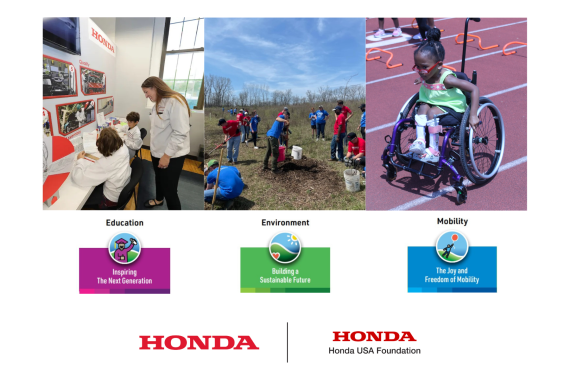Honda Performance Development Races to Save Lives
When Honda Performance Development (HPD) partnered with medical device company BioMed Innovations to help COVID-19 patients, the team entered into a race against the clock to design a venturi flowmeter for ventilator compressors. They faced unique challenges with this project – such as learning how the human lung operates.
“The meter measures how much air you exhale and how quickly you exhale,” explained Mark Wilson, manufacturing manager with HPD. “While our team has experience measuring airflow for engine parts and components, the human lung is different. We ended up correlating a human exhale to the exhaust for an engine. Once we made that connection, it helped make developing the design for the venturi flowmeter easier.”
A total of 15 HPD simulation and design engineers supported the effort. The group reviewed BioMed’s needs and then created a model of the part using simulation. “There were some interesting packaging restrictions,” said Kevin Hawk, simulation engineer. “The original concept would not work. We needed to miniaturize the part’s overall length so that it would fit the packaging.”
A total of 40 designs were run overnight to optimize key venturi flowmeter characteristics and meet required targets for sensitivity measurements.
“The human exhale isn’t a constant flow,” added Hawk. “It peaks in the beginning, and then tapers off. When simulating the airflow through the part, we needed to make sure the volume of air expelled by the patient was consistent.”
Once the simulation was completed, the design team used the information to create a prototype to check packaging restraints and durability. “We wanted to make sure the device didn’t break after a few uses,” said Senior Designer Chun Wu. “The flowmeter needed to be durable and strong enough.”
This runs along the same lines as designing high performance racing components, which need to be small and lightweight, but last a long time.
The turnaround time for the project was extremely quick, with the base conditions for the part defined, designed and simulated over a weekend in early April, sent for rapid manufacture that Monday, shipped to BioMed on Tuesday, and then followed by design validation testing on Wednesday.
Initially BioMed had some doubts about whether the design would work. However, the part ended up exceeding expectations and was praised by both BioMed and the Federal Drug Administration (FDA). In addition, ventilators with the HPD designed venturi flowmeter will be more cost effective, resulting in about a third of the cost compared to regular ventilators.
In June, a meeting was held where the FDA granted approval of the part after just three and a half months. During the call, doctors discussed the many lives that would be saved, with the first 10,000 ventilators planned for delivery to Chile. “I got emotional during that call,” admitted Wilson. “Knowing that our team had a part in helping save lives is very humbling.”
“It’s not every day that we get to help in a crisis,” added Wu. “I’m very happy that the part was put into use and that the HPD team was able to make a difference during this pandemic.”

